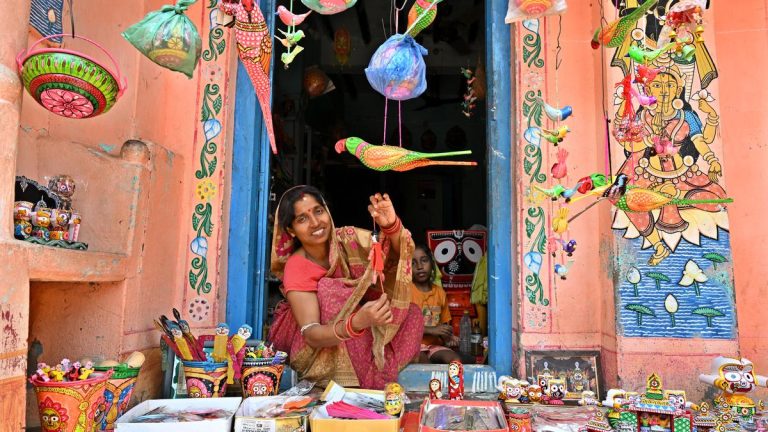At Raghurajpur, art flows like a river through time. Situated in Odisha’s Puri district, this heritage village is a living testament to creativity. Narrow, winding lanes are lined with homes that double as workshops, their verandahs adorned with intricate Pattachitra scrolls, delicate palm-leaf engravings, and vibrant wooden toys.
Seated on low stools, men and women work side by side — bringing mythological tales to life with fine strokes and natural colours, or carving intricate motifs into dried palm leaves. The scent of fresh paint and the rhythmic tapping of chisels fill the air, echoing age-old traditions passed down through generations.
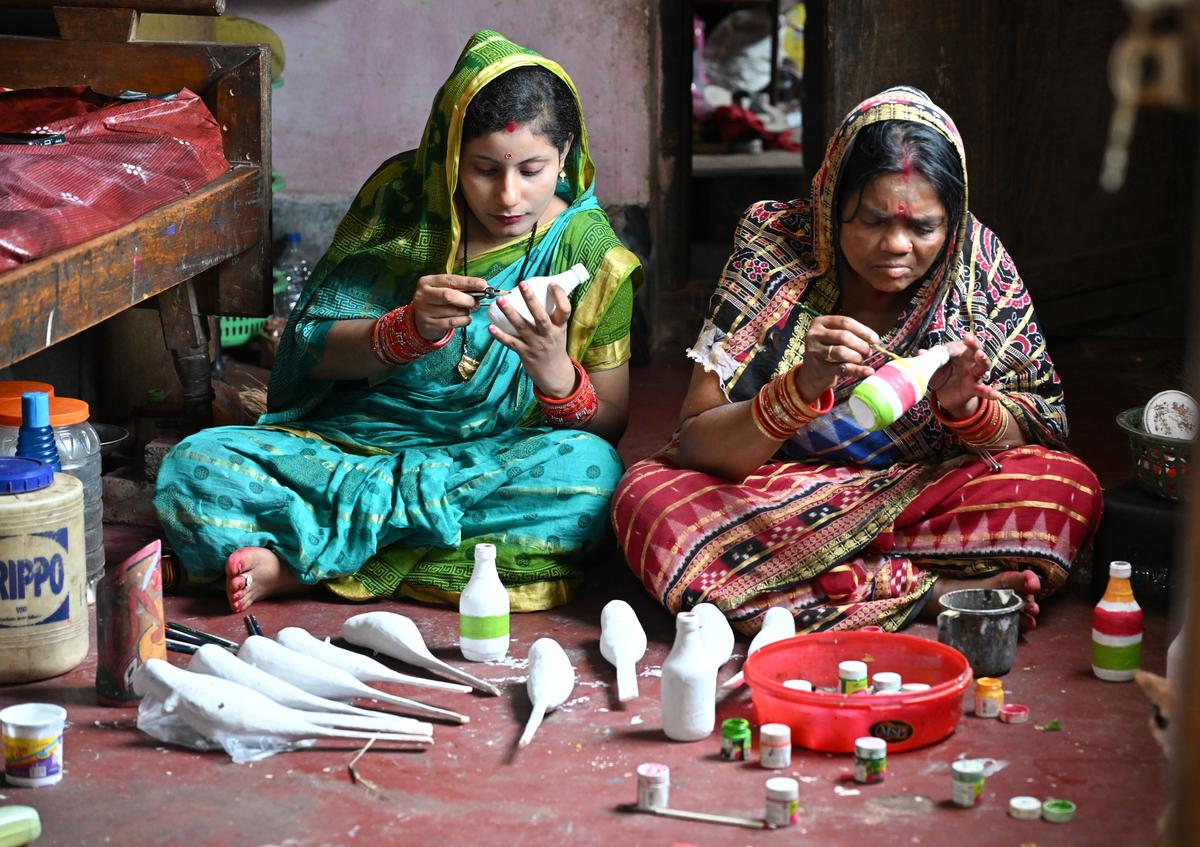
Women painting motifs with natural colours on bottles at Raghurajpur heritage village, known for Pattachitra and palm leaf engravings, in Puri district in Odisha.
| Photo Credit:
KR Deepak
Inside one such home, 27-year-old Jyotiranjan Nayak sits beside his father, carefully etching designs onto palm leaf, continuing a family craft. His father, a master artist, began training him at the age of six. “Most children here start learning at three. In fact, they pick up a paintbrush before they even hold a pencil. I was a bit late,” he says with a smile.
Jyotiranjan is one of 180 members of the Raghurajpur Chitra Karigari Co-operative Society, an organisation dedicated to preserving these traditional art forms.The village is home to several national award-winning artists who helped bring recognition to this once-obscure settlement. In 2000, following a two-year research and documentation initiative by the Indian National Trust for Art and Cultural Heritage (INTACH), Raghurajpur was officially developed as Odisha’s first heritage village.
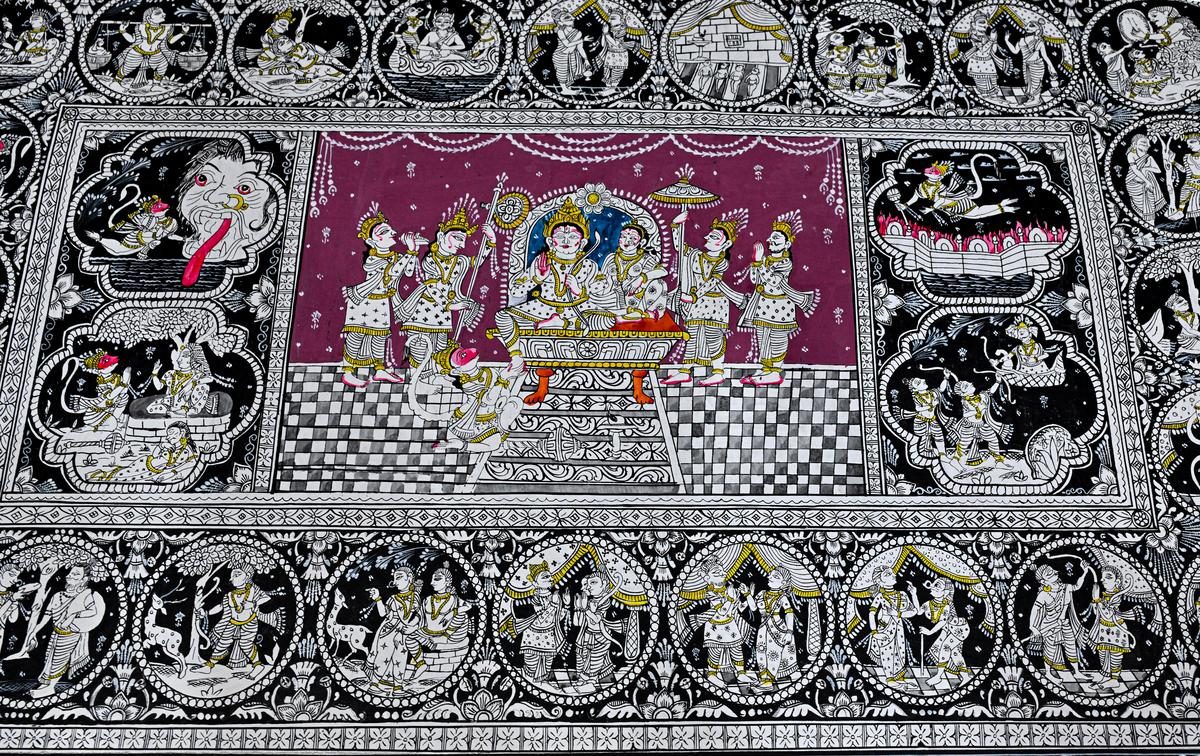
A Ramayana-themed Pattachitra painting at Raghurajpur heritage village in Puri district of Odisha.
| Photo Credit:
K R Deepak
Every house here is painted with vibrant Pattachitra motifs. “During the pandemic, when business came to a halt, the Lalit Kala Akademi and Odisha’s Department of Language, Literature and Culture provided financial assistance of ₹10,000 per household, encouraging us to paint our homes with these traditional murals,” says Jyotiranjan.
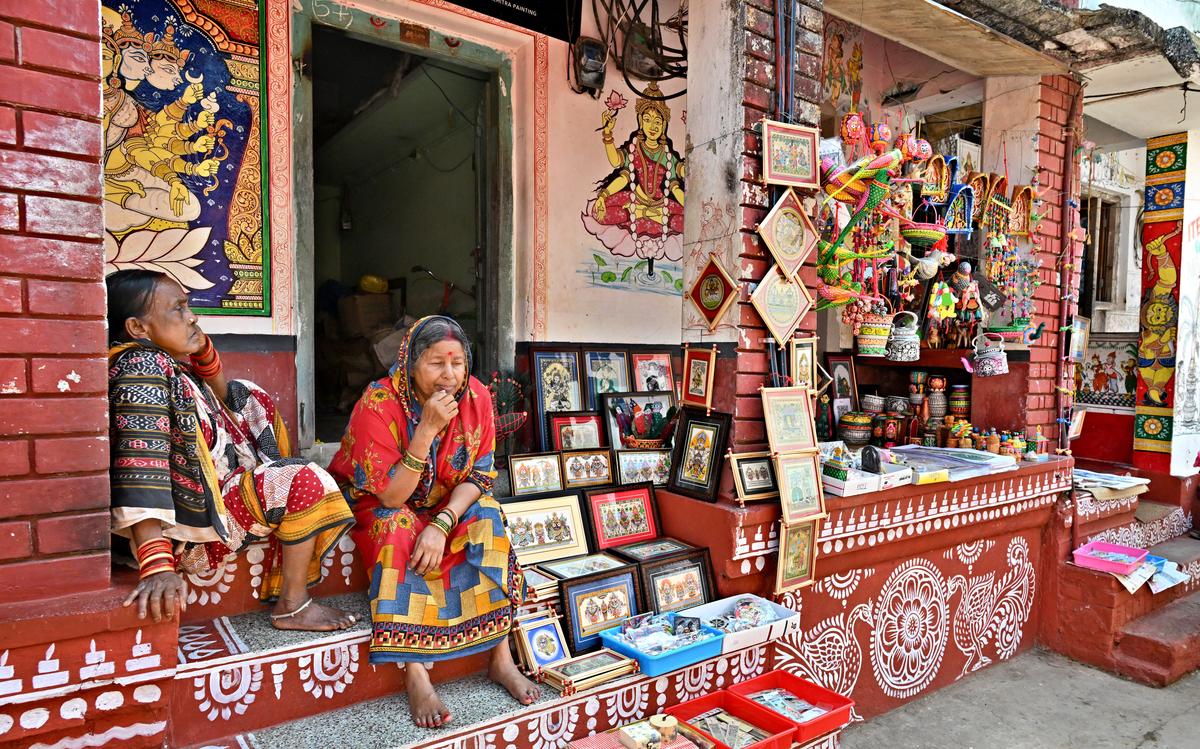
Woman sits outside her house with crafts displayed on the verandah at Raghurajpur heritage village, known for Pattachitra and palm leaf engravings, in Puri district of Odisha.
| Photo Credit:
K R Deepak
Adding to the village’s charm, the homes themselves serve as living galleries — adorned with painted teapots, carved betel nuts, brightly coloured coconuts, palm-leaf engravings, Pattachitra paintings, and papier-mâché toys and masks made from cow dung paste.
Ancient legacy
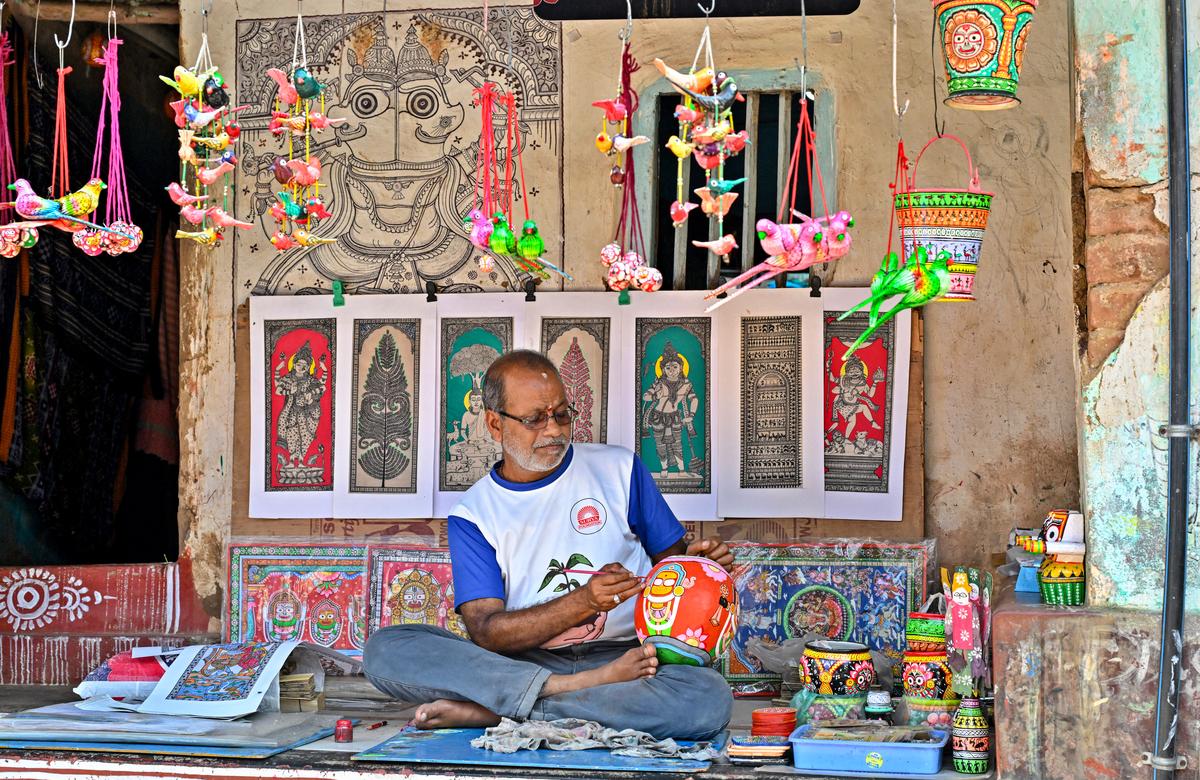
An artist painting a coconut shell sitting at the verandah of his home at Raghurajpur heritage village, known for Pattachitra and palm leaf engravings, in Puri district of Odisha.
| Photo Credit:
K R Deepak
Palm-leaf carvings, known as Talapatra Chitra, date back to the 2nd Century BCE, when they were used as manuscripts to record sacred texts and epics. The fine incisions on dried palm leaves, filled with natural inks, have preserved mythological tales, religious scriptures, and royal decrees for centuries.
In contrast, Pattachitra paintings have long been entwined with Odisha’s temple traditions, particularly within the Jagannath cult. Characterised by bold lines, natural pigments, and intricate depictions of deities, these artworks were originally created as temple offerings and souvenirs for pilgrims visiting Jagannath Temple in Puri. The art form remains deeply spiritual, with artists adhering strictly to age-old methods of preparation and composition.
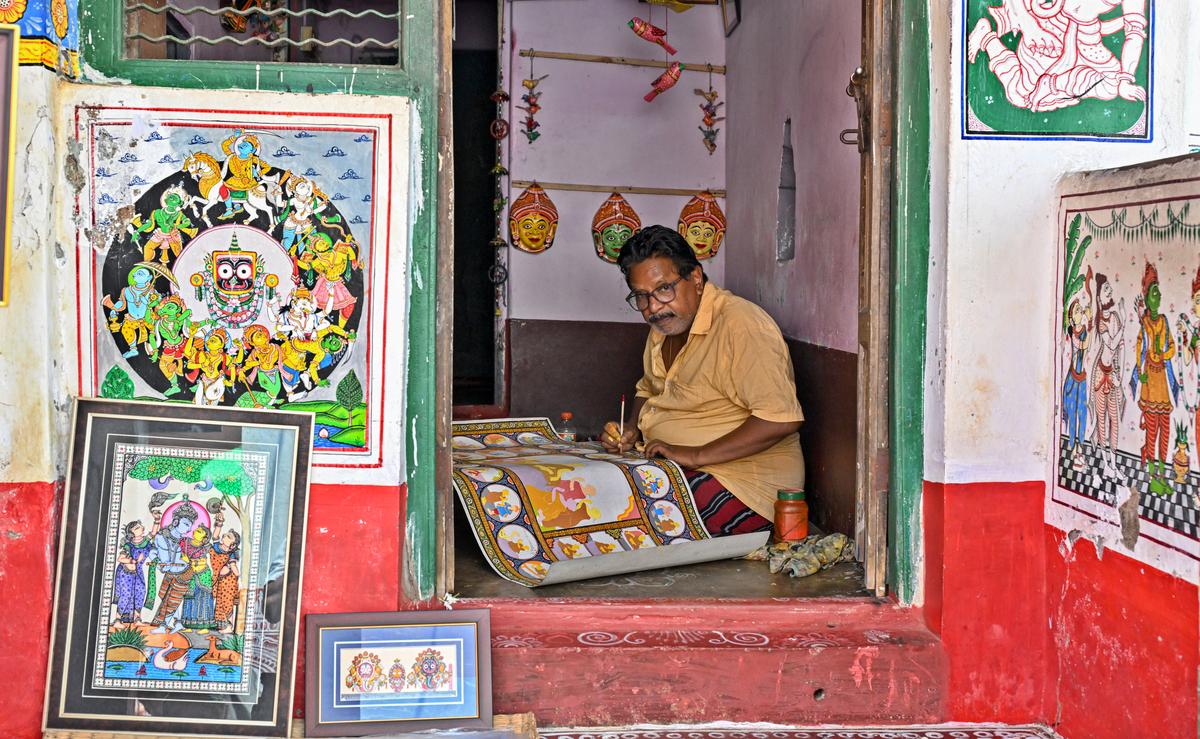
An artist painting a Pattachitra painting at his home at Raghurajpur heritage village, known for Pattachitra and palm leaf engravings, in Puri district of Odisha.
| Photo Credit:
K R Deepak
Creating a Pattachitra is, quite literally, a craft rooted in devotion. Artists first make a canvas called patt by gluing three layers of cotton cloth with tamarind paste. Once dry, the surface is polished with limestone powder for a smooth finish. The colours are all natural — black from lamp soot, white from seashell powder, yellow from harital stone, red from hingul, brown from mud, and blue from indigo. Over 25 shades are derived by blending these base colours.
Raghurajpur is not only the heartland of Pattachitra but also home to over ten different crafts, including paintings on handmade canvas and tussar silk, stone carvings, papier-mâché masks, cow dung toys, and Ganjapaplaying cards. Each craft is a labour-intensive journey that demands both precision and patience.
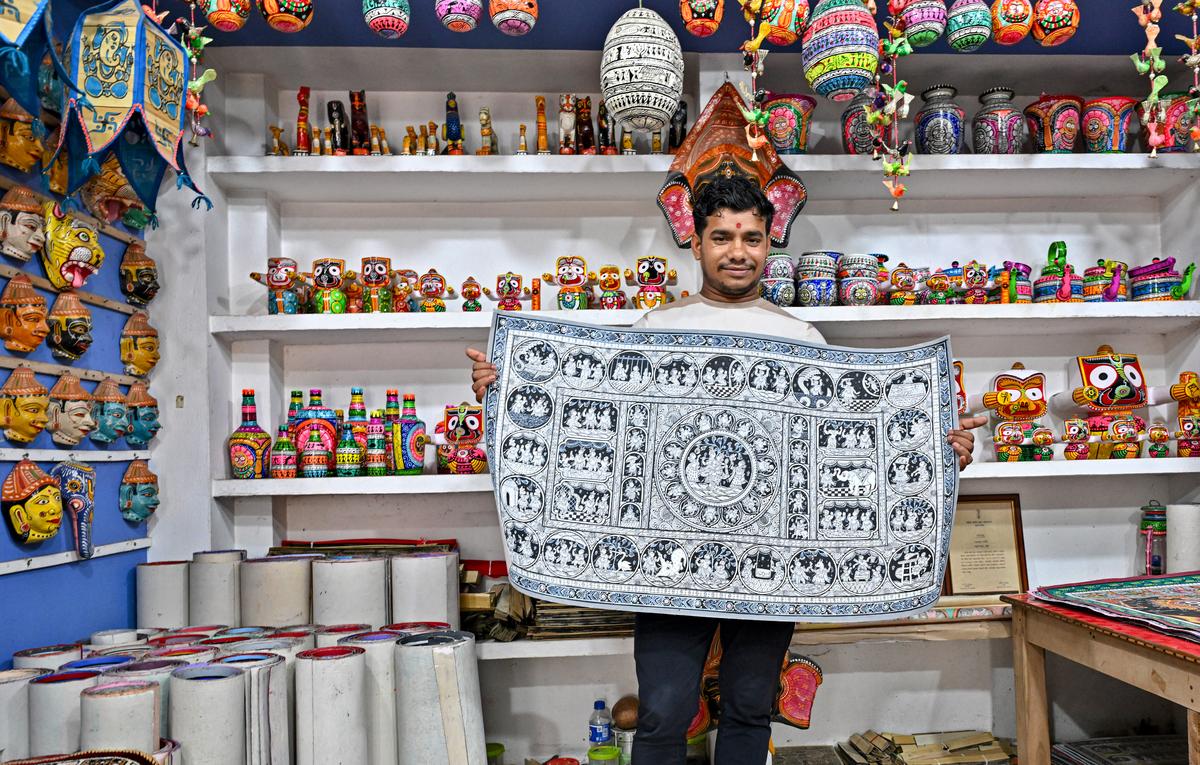
Bablu Bariki showing a Pattachitra painting at his home at Raghurajpur heritage village, known for Pattachitra and palm leaf engravings, in Puri district of Odisha.
| Photo Credit:
K R Deepak
Bidyadhar Bariki, a 55-year-old artist, spent three months completing a 40-inch-long Pattachitra depicting Lord Venkateshwara. “This one is special,” he says, folding it quickly to avoid photographs. “I’m hoping to submit it for awards.” Like many artisans in the village, he and his son Bablu travel to cities like Delhi, Bengaluru, and Chennai for exhibitions — their main source of income. “Despite our heritage, Raghurajpur remains largely unknown,” Bablu laments. “There’s hardly any tourism promotion. Even Odisha’s airports don’t mention us.”
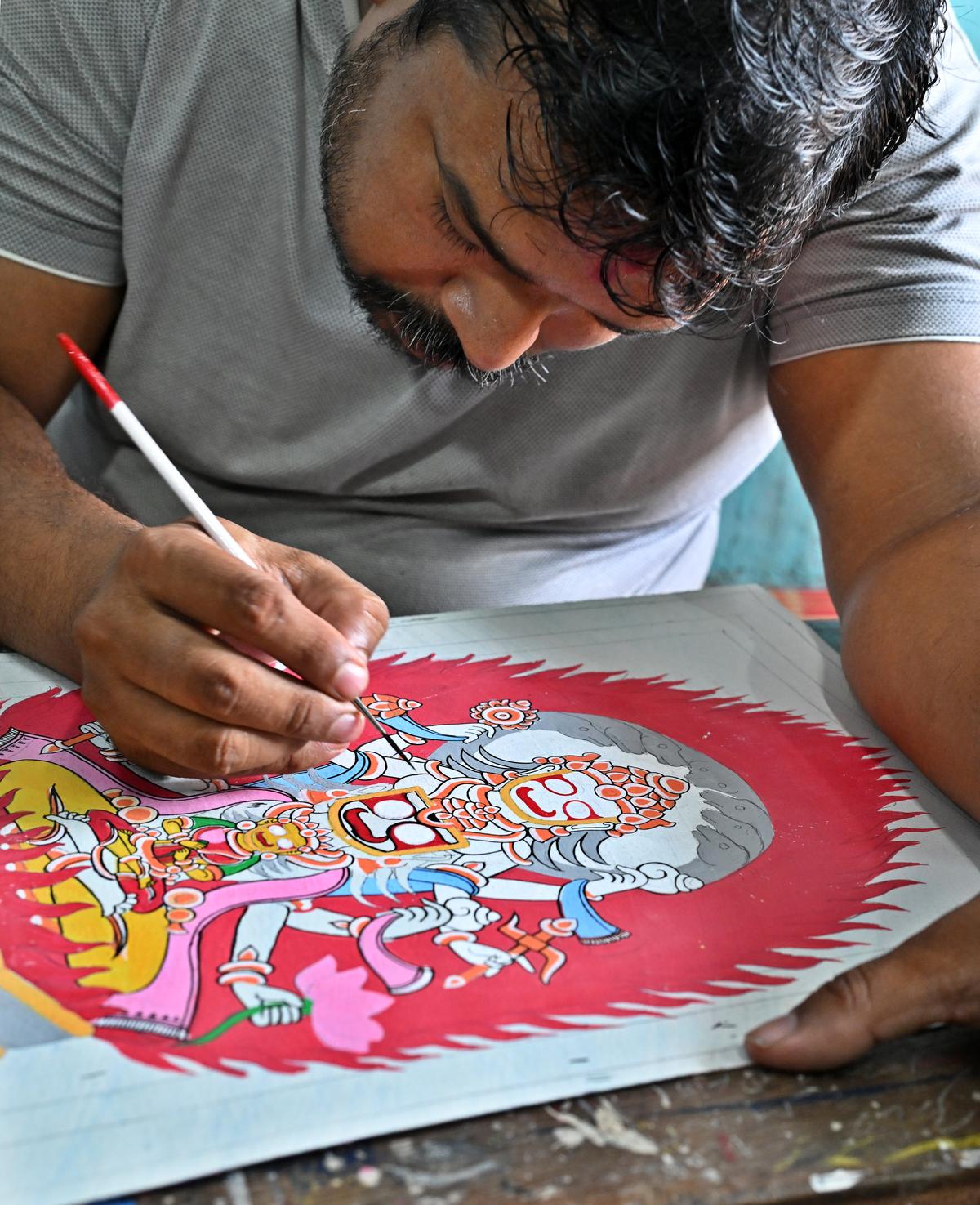
Sridhar Nayak painting a Pattachitra painting at his home at Raghurajpur heritage village, known for Pattachitra and palm leaf engravings, in Puri district of Odisha.
| Photo Credit:
K R Deepak
In one quiet corner of the village, Sridhar Nayak is carefully working on a sprawling Pattachitra that narrates the entire Ramayana. “These paintings can last generations,” he says. “But with the rise of block-printed tussar silk, many people opt for cheaper alternatives without realising the labour and love behind originals.”
Beyond these celebrated art forms, the village was once a thriving hub for Ganjapa, a traditional hand-painted playing card game rooted in Odisha’s cultural history. The craft of Ganjapa card-making, known for its circular cards adorned with mythological and folk motifs, has faded over time, overshadowed by modern entertainment. Once practiced by several artisans in Raghurajpur, today, only one artist remains, striving to keep the tradition alive. With diminishing demand and younger generations moving away from the craft, Ganjapa faces an uncertain future.
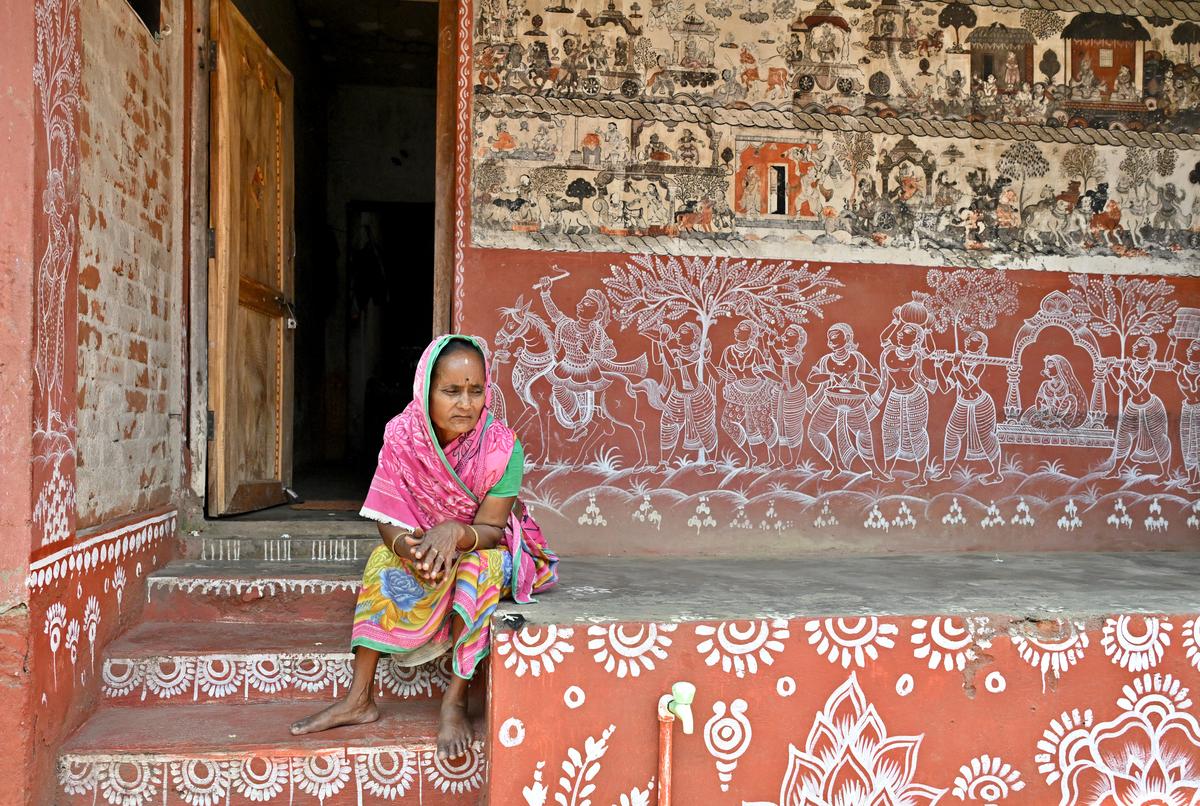
A woman sits outside her house with walls painted with Pattachitra motifs at Raghurajpur heritage village, known for Pattachitra and palm leaf engravings, in Puri district of Odisha.
| Photo Credit:
K R Deepak
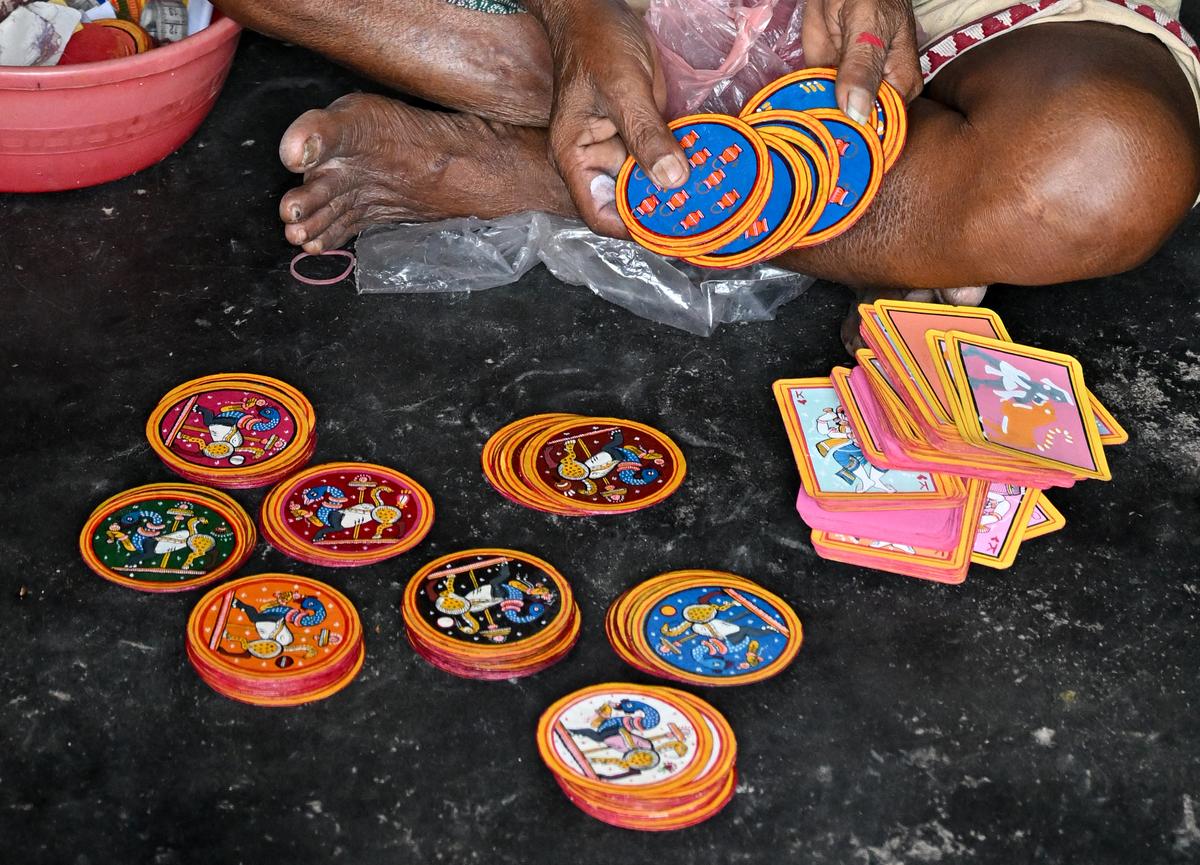
77-year-old Banamali Mohapatra, the only surviving artist to make the Ganjapa cards, showing his work at his home at Raghurajpur heritage village, known for Pattachitra and palm leaf engravings, in Puri district of Odisha.
| Photo Credit:
K R Deepak
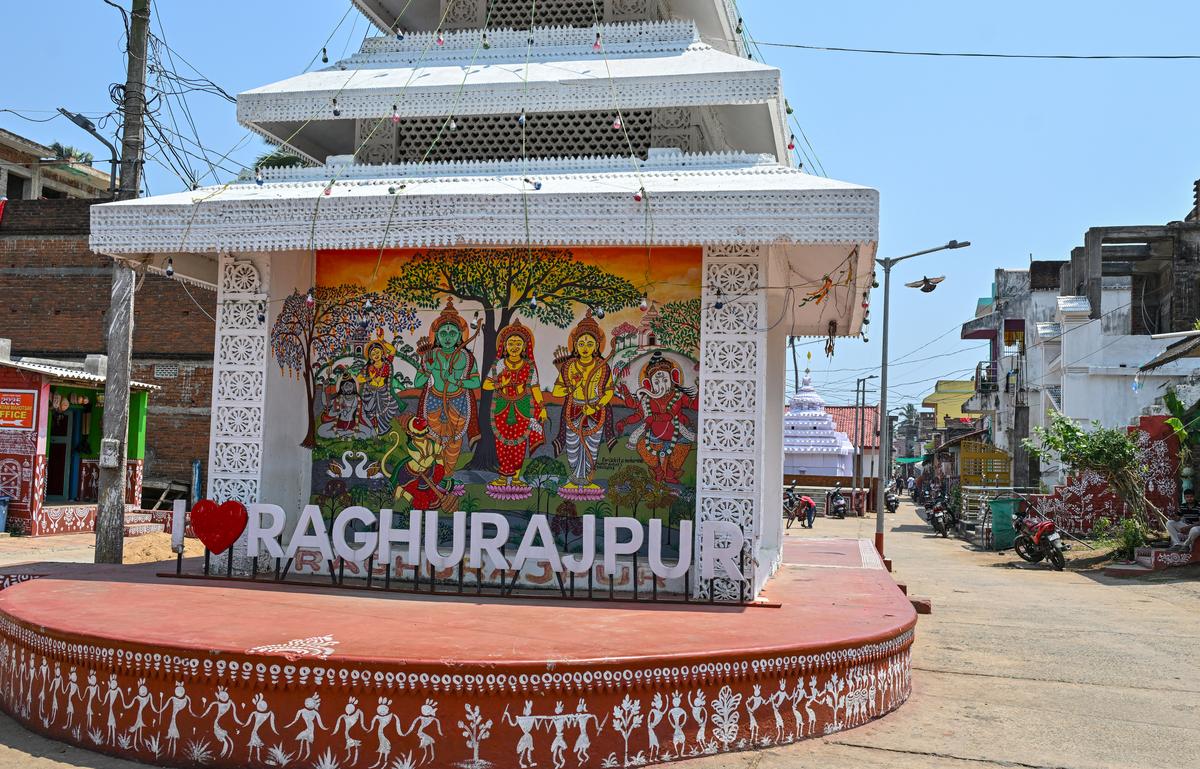
A view of the entrance of the Raghurajpur heritage village, known for Pattachitra and palm leaf engravings, in Puri district of Odisha.
| Photo Credit:
K R Deepak
Raghurajpur remains a testament to Odisha’s artistic resilience. Still, the survival of its traditions hinges on visibility and support. The entry of Taj Puri Resort and Spa has provided a crucial boost, with the luxury hotel actively promoting the village and its artisans to a wider audience.
“We’re curating tours and experiences for our guests that showcase the village and its art,” says Ankit Tandon, General Manager at the resort. “Visitors watch artists at work — engraving palm leaves or painting Pattachitra — and often purchase pieces to take home.”
This initiative, along with growing awareness, is expected to bring renewed recognition to Raghurajpur.
(The writer was in Puri on the invitation of Taj Puri Resort and Spa)
Published – April 03, 2025 07:01 pm IST

